Have you heard the MONTEZUMA?
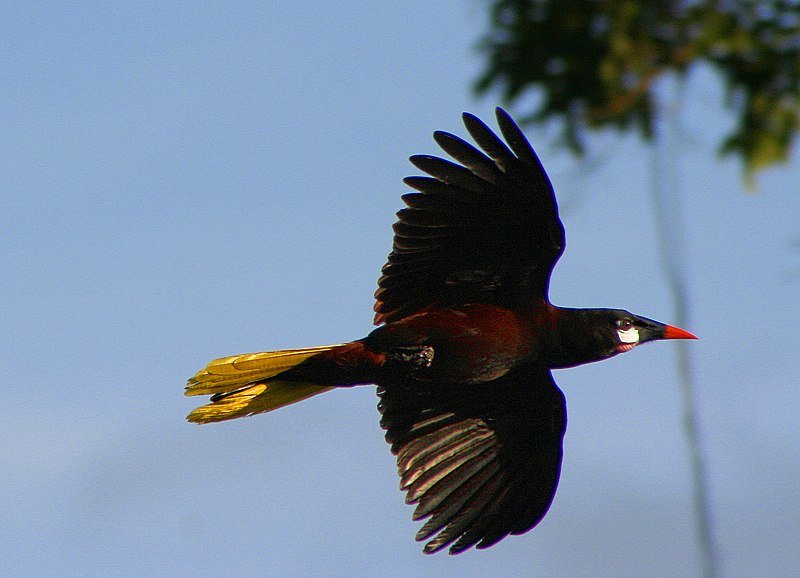
MONTEZUMAS
People are never ‘in the middle’ about Montezumas – they either LOVE or HATE these striking birds. It is nice to hear their unusual calls on your evening walk but not nice to be awakened by a massive Montezuma colony at 5.00 in the morning!
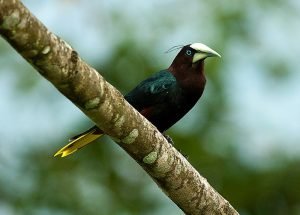
We all have heard the distinctive call of the Montezuma Oropendola or the lesser-talked-about Chestnut-Headed Oropendola – the two blackbird species that inhabit our neighborhoods. So while the Montezuma is much more famous as it is bigger and carries the distinctive name of a powerful Aztec emperor they do not deserve all the blame! The birds are not shy about being seen either, their yellow tails providing a stark contrast against their black bodies as they fly from treetop to treetop. With an unforgettable call, the strangest nests you have ever seen, and their striking plumage, Oropendolas are adored by tourists but have a more complex relationship with the local residents.
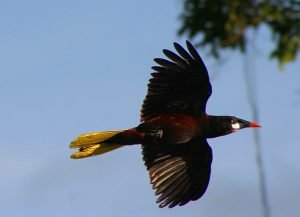
OUR TWO OROPENDOLAS
Two Oropendolas species inhabit Costa Ballena – and they are very similar in appearance and habits. The Montezuma is the larger of the two, being about 30% longer than the Chestnut Headed Oropendola. Funnily, the Montezuma Oropendola is mostly chestnut with a black head while the Chestnut Headed Oropendola is mostly black with a chestnut head. Both species keep bright yellow tails as their trademark. The word “oropendola” comes to us from Spanish: “oro” meaning “gold” and “péndola’ meaning “feather”.

THE CALLS
Male Oropendolas are famous for their calls – I remember talking to my Australian friend when a nearby Oropendola interrupted our conversation resulting in many questions about the bird that made such a ‘cool sound’. This peculiar sound has been described as:
“…a long-drawn, far-carrying liquid gurgle, an undulatory sound ascending in pitch” or
“conversational bubbling followed by loud gurgles, tic-tic-glik-glak-GLUUuuuuu”
“… a very quiet series of similar syllables which rise from 250 Hz to 900 Hz. This introductory portion of the song is often truncated, but may be as long as 1.5 seconds. The remainder of the song is a series of overtone-rich overlapping syllables most of which are upslurred. The total song lasts between 0.75 and 2.0 seconds and often rises to a maximum frequency of > 8000 Hz. The terminal syllable is a longer downslurred note and is usually the loudest part of the song”
However you may put it, you will be struck by the song the first time you hear the call, a cool and complex mix of sounds emanating in all directions from the highest treetops.
THE WAKE UP CALLS
ropendola songs are bold, unusual, and hard to ignore—but not everyone is a fan. Those living beneath nesting trees often bear the brunt of the noise. These birds nest in colonies, sometimes with dozens of hanging nests in a single tree. A typical group includes 40 to 50 females and 4 to 5 males.
One male calling at dawn is loud enough. Add a few more, and the tree becomes a chorus of high-perched roosters, oblivious to the sleepers below. The females don’t sing, but they chatter constantly. The sound rarely stops, and for some, it’s more wake-up call than tropical charm.
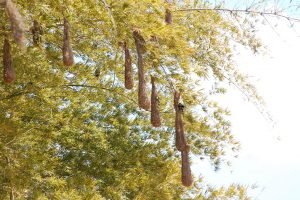
THE NESTS AND NESTING
Oropendola nests are hard to miss—long, woven pouches dangling from high branches, often measuring between 60 and 180 centimeters. These hanging homes cluster in colonies, with dozens suspended under a single tree. The birds follow a unique system called “female defense nesting.” While females weave their nests, males compete fiercely, fighting to climb the social ladder.
Eventually, one male wins the title of alpha and fathers most of the colony’s chicks. But the story doesn’t end there. When the dominant male leaves, the others step in. They guard the colony, keeping watch until the alpha returns. It’s a complex mix of rivalry, cooperation, and instinct.
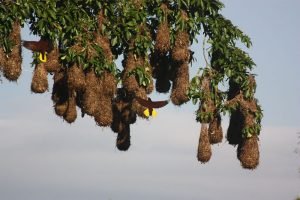
ARCH-ENEMIES
Oropendolas face two persistent enemies—the Cowbird and the Botfly. Cowbirds act as nest parasites, sneaking their eggs into nests that aren’t theirs. Oropendolas, especially the Chestnut-Headed species, often raise these imposters unknowingly. Montezumas, on the other hand, fight back. They defend their colonies aggressively, attacking Cowbirds that get too close.
The Botfly poses an even greater threat. Its larvae burrow into Oropendola chicks, causing infections that lead to high mortality rates. Ironically, those same larvae serve as the primary food source for Cowbird chicks—who are themselves intruders in the nest. It’s a tangled web of parasitism, defense, and survival.
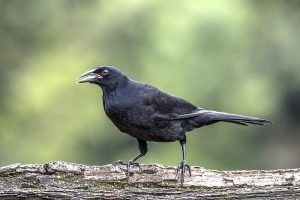
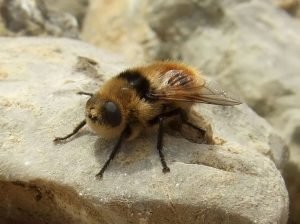
CONSERVATION STATUS
Good news—our Oropendolas face no threat of extinction. They thrive in Costa Rica and hold the status of “least concern.” The other four Oropendola species, though not found here, share that same classification. Locals in Costa Ballena say sightings are increasing, and I believe them. Reforestation continues across the region, giving these birds more space to nest and feed.
Expect to hear their calls often, especially the Montezuma and Chestnut-Headed varieties. Their voices echo through the canopy, sometimes waking you before sunrise. It’s part of the charm of living here—wild music from birds that feel right at home.
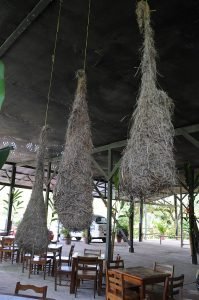
Do you dream of living in the midst of breathtaking tropical scenery and amongst amazing animals like the burbling Montezuma? At RE/MAX WE SELL PARADISE, we list hundreds of tropical properties – homes, land, farms, estates & businesses – all within a stone’s throw of the amazing rainforests, mountains, beaches and resident exotic animals that make Costa Ballena a world-famous destination. Start your journey to paradise by browsing our property listings here.



